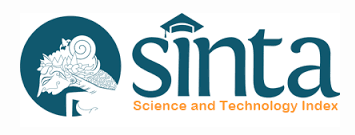ANALISIS WACANA KRITIS DI MEDIA SOSIAL (STUDI PADA FENOMENA PRO-KONTRA PENOLAKAN DAKWAH USTADZ ABDUL SOMAD)
Abstract
Da'wah and technological development are inseparable, this is based on the concept of contemporary da'wah that is easily accepted by the present, various new phenomena such as the case of rejection of clerics in several regions arise along with the rise of activity on social media, which incidentally is full of information which is not necessarily true (Tornberg & Tornberg, 2016: 132-134). The news of the pros and cons of rejecting the da'wah experienced by Ustadz Abdul Somad was forwarded freely on social media, one of the social media is twitter. In analyzing discourse on social media, especially Twitter, the author uses analysis technic of critical discourse analysis theory by Norman Fairclough to dismantle discourse practices (Eriyanto, 2015: 285), and includes Antonio Gramsci's theory of hegemony to see discourse battles (Ives, 2004: 63 ) in the phenomenon of Ustadz Abdul Somad's rejection. The results of this study include: (1) The issue of the affiliation of Ustadz Abdul Somad can be mediated with tabayyun and clarification through the media, both traditional and social. However, the issue of khilafah is growing until it displays a process of mutual accusation between the parties involved in the discourse of the khilafah revival; 2) The discourse of Ustadz Abdul Somad's rejection on social media in this study contains trends from two different ideologies namely Nahdlatul Ulama (NU), and Hisbut Tahrir Indonesia (HTI (3) The other tendencies are also influenced by political interests; 4) Between HTI and Banser has an impact on the image of Prabowo's and Jokowi's strongholds with the issue of the fight. HTI was identified as part of opposition supporters, while the impact on the Jokowi camp with anti-Islamic issues, because it was deemed not to show an attitude to clean up the chaos caused by burning the flag at the commemoration of the “Hari Santri Nasional.
References
Buku
Arifin, S. dan Maulana, M. T. (2017). Madzhab Ukhuwah. Pontianak: CV. Razka
Pustaka.
Azizi, M. H. (2017). Hegemoni dalam Wacana Media (Pertarungan Wacana Muktamar Nahdlatul Ulama ke-33 dengan muktamar Muktamar Muhammadiyah ke-47 pada Surat Kabar Harian Tempo, dalam Antologi Kajian Islam, 30. Tesis-Surabaya: Pascasarjana UINSA Press.
Barker, C. (2011). Cultural Studies, Terj. Nurhadi, Cet. 7. Bantul: Kreasi Wacana.
Burton, G. (2012). Media dan Budaya Populer. Yogyakarta: Jalasutra.
Departemen Pendidikan Nasional. (2008). Kamus Besar Bahasa Indonesia Pusat Bahasa. Jakarta: PT. Gramedia Pustaka Utama.
Eriyanto (2015). Analisis Wacana Kritis: Pengantar Analisis Teks Media. Yogyakarta: LKiS.
Ghofar, M. A. (2015). Salah Kaprah Khilafah. Yogyakarta: Deepublish, 2015.
Haryatmoko. (2016). Critical Discorse Analysis (Analisis Wacana Kritis): Landasan Teori, Metodologi, dan Penerapan. Jakarta: Rajawali Pers.
Hosen, N. (2018). Islam Yes, Khilafah No!, Jilid 2. Yogyakarta: Suka Press.
Ives, P. (2004). Language and Hegemony in Gramsci. London: Pluto Press.
Jorgensen, M.W dan Louise, J. P. (2007) Analisis Wacana: Teori dan Metode, Terj. Imam Suyitno dkk. Yogyakarta: Pustaka Pelajar.
Kriyantono, R. (2012). Teknik Praktis Riset Komunikasi, Cet 6. Jakarta: Kencana.
NIC: Report of the National Intelligence Council’s 2020 Project. (2004). Mapping The Global future. Pittsburgh: Government Printing office (GPO).
Somad, A. (2018). 37 Masalah Populer, cet 8. Riau: Tafaqquh Media, 2018.
Syam, N. (2012). Tantangan Multikulturalisme Indonesia dari Radikal menuju Kebangsaan. Yogyakarta: Kanisius.
Weiss, G and Ruth Wodak. (2003). Critical Discourse Analysis: Theory and Interdisiplinarity. New York: Palgrave Macmilan.
Jurnal dan website
ARN. (2018, Juli 25). Corong HTI! Semarang Tolak Tabligh Akbar Ustadz Abdul Somad. Retreived November 09, 2018, from https://arrahmahnews.com
Bambang S. (2018, 1 Januari). Kupas Tuntas Ustadz Abdul Somad (1). From www.hidayatullah.com (Retreived Januari 1, 2019)
Burhani, A. N. (2019, 26 Maret). Nahdlatul Ulama and the Framing of an Ideological Battle in the 2019 Indonesian Elections. Retreived Maret 19, 2019, from www.iseas.edu.sg
Debita Matongdang. (2017, Desember 12). Ustad Somad ditolak di Bali, Salah Satu Pelakunya anggota DPD. Retreived November 09, 2018, from https:// news.detik.com
Esthi Maharani. Soal Ceramah UAS ditunggangi, Busyo Muqoddas: tak Ada Bukti. Retreived Februari, 2019, from https://www.voa-islam.com
Hafsi, N. dkk. (2017). Perpersentasi Kepemimpinan Calon Presiden di Twitter. Jurnal Aspikom. 270-24
Hilmy, M. (2011). Akar-Akar Transnasionalisme Isam Hisbut Tahrir Indonesia (HTI). Islamica, 6 (1).
Ibrahim, G. M. (2018, 07 Agustus). Apa Kabar Pencalonan Ustadz Abdul Somad jadi Cawapres Prabowo?. Retreived, Januari 27, 2019, from: m.detik.com
Jayanto, D. D. (2019). Mempertimbangkan Fenomena Populisme Islam di Indonesia dalam Perspektif Pertarungan Diskursif: Kontestasi Wacana Politik antara Gerakan Nasional Pengawal Fatwa Ulama (GNPF-ULAMA) dan Nahdlatul Ulama (NU). Jurnal Filsafat, 29 (1), 1-25
Kurniawan, B. (2018). Politisasi Agama di tahun Politik: Politik Pasca-Kebenaran di Indonesia dan Ancaman bagi Demokrasi. Jurnal Sosiologi Agama, 133-154
Mumazziq, Z. R. (2017, Desember 29). Membandingkan Abdul Somad dengan Kiai Said Aqil adalah ‘Njomplang.’ Retreived Desember 28, 2018, from: www.dutaislam.com,
Nathaniel, F. (2018, 2 Oktober). Menyeret Kasus Pembakaran bendera ke Reuni 212 dan Imbas Politiknya. Retreived Mei 03, 2019, from: dalam https://tirto.id
Quraisy, K. (2018) Profil Biografi Ustadz Abdul Somad. Retreived November 09, 2018, from https://www.fiqihmuslim.com
Rahadian, L. (2018, 08 Agustus). Untung Rugi Prabowo Pilih Somad sebagai Cawapres di Pilpres 2019. Retrieved Januari 27, 2019, from tirto.id
Rosyid, T. (2018, 31 Oktober). Pembakaran Bendera Tauhid, Persekusi HTI, dan Pilpress 2019, dalam. Retreived Mei 03, 2019, from: https://voa-islam.com
Sasongko, J. Abdul Somad ditolak Masuk Hongkong. Retreived Desember 09, 2018, from http://n.cnnindonesia.com
Setiawan, W. (2018, 07 September). Kata GP Ansor Jepara Soal UAS Batalkan Ceramah Karena Intimidasi. Retreived Februari 12, 2019, from https://news.detik.com.
Solusi. (2017, Desember 24). Ustaz Abdul Somad ditolak Masuk ke Hong Kong. Retreived November 09, 2018, from https://www.kaskus.co.id
SUO2. (2019, 9 Desember). Sempat ditolak, Ustadz Somad Akhirnya lancar Ceramah di Bali. Retreived Januari 19, 2019, from: https:/seruji.co.id
Tafaqquh Video. (2018, 30 Juli). Ustadz Abdul Somad, Lc., MA ditanya tentang Cawapres- begini Jawabannya Retreived Februari 2, 2019, from www.youtube.com
Tornberg A& Tornberg P. (2016). Muslims in Social Media Discourse: Combining Topic Modeling and Critical Discourse Analysis. Journal of Discourse, Context, and Media, 13, 132-134.
Voa Islam. UAS diintimidasi, Forum Silaturrahim Alumni Mesir Angkat Bicara. Retreived Februari 12, 2019, from https://www.voa-islam.com
Once an article was published in the journal, the author(s) are:
granted to the journal right licensed under Creative Commons License Attribution that allows others to share the work with an acknowledgment of the work's authorship. permitted to publish their work online in third parties as it can lead to wider dissemination of the work. continue to be the copyright owner and allow the journal to publish the article with the CC BY license receiving a DOI (Digital Object Identifier) of the work.





